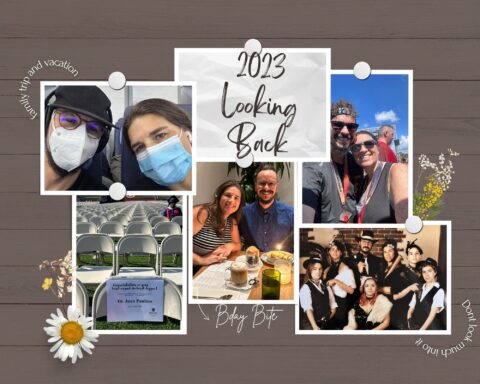Abstract
The question of what keeps love vibrant and healthy throughout the test of time is a daunting question to attempt to answer. This paper will frame this question and find answers from history, popular culture, and ultimately from current and relevant scientific research. From all the couples counseling theories the one presented in this paper is Gottman Couples Theory and how it interacts with the question at hand. Towards the end this paper will seek to find the placement of couples happiness in the grand Biblical narrative and its implications for couples and counselors.
Keywords: Love, vibrancy, longevity, Gottman, bids, flexibility, intimacy, passion, commitment
Introduction
In this final research paper the goal is to present the topic “Keeping Marital Love Vibrant and Healthy for a Lifetime” through the lens of the couples counseling theories studied in EDCO811 Marriage Counseling class. The topic will be analyzed taking into consideration the body of scholarly work already researched and published, the role of marriage counseling in keeping marital love vibrant and healthy, the dynamics of counselor and couple, a chosen counseling theory and its rationale and limitations, and how this topic of marital love and health ties into the broader story of God and humanity.
The paper will begin by taking a brief look at love, and how we interact with the idea of love, from its beginning and across cultures until arriving to our current times and the concept of romantic love. The topic of romantic love in the paper incorporates insights from Eric Fromm in the 1950’s, Gary Smalley in the 1990’s, all the way to Malcolm Gladwell in the 2000’s. Underpinning the many authors mentioned in this paper will be the chosen theory for couples to enjoy vibrant, healthy and long lasting loving relationships: the Gottman Couples Theory.
This combination of history, authors, and research papers answer the question at hand by specifically pointing out ways to transition, in an integrative way, the feeling of “being in love” to the more sustainable love that is full of layers and nuances through which real people experience in real life and real time. Indeed, that is the thesis of this paper, the pursuit of love quality and longevity is the byproduct of positively emotionally connecting with the partner, in a way that allows the person freedom to be real and to respond in a real way.
Academic Research
Brief History
The main topic at hand is love, its longevity and aliveness. The topic of romantic love, however, has been addressed since the beginning of recorded times all the way from ancient Africa and far east China, Middle Eastern culture, the ancient Greek and Romans, the Medieval Era, all the way to the Renaissance and our current times in Europe and the Americas (Abbott, 2010; Coontz, 2005; Hunt, 1959; Lee, 2007; Licht, 1972; Manniche, 1987).
This brings us to the question what is love, actually? To which anthropologist Anna Machin shares in a recent article from The Guardian that, from an evolutionary standpoint, love is what helps the species cooperate, a functional attachment different from lust or sexual drive (Packham, 2021). In the same article, and in her UCLA dissertation, one of the sociologists behind the mobile apps Tinder and Bumble, Dr. Jess Carbino, sums it up succinctly by saying love is “complicated” (Carbino, 2015).
Contemporary View
Perhaps one of the most influential authors in the area of love, Eric Fromm, could share insight on this topic. On his seminal book The Art of Loving, he writes that love is not something natural, that it requires patience, faith, and the overcoming of narcissism… that love is not a feeling, but a practice (Fromm, 1956). Taking a page from Fromm on the craft of loving, the question is then, how exactly can love be cultivated into its best version? How can we make great love last forever?
One famous Christian author wrote in a book titled Making Love Last Forever the 5 “vital signs” we ought to look out for in order to make our love last forever: the ability to be ourselves, the encouragement to authenticity, a sense of safety in sharing feelings, the mutual feeling of connectedness, and the respect of property lines (Smalley, 1996). A more recent book, on this same topic, quoted Simone Signoret to open her last chapter appropriately titled The Science of a Good Marriage: A Prescription for Marital Health saying “Chains do not hold a marriage together. It is threads, hundreds of tiny threads, which sew people together through the years” (Parker-Pope, p.251, 2010)
Gottman Couples Theory
In the middle of these many threads, vital signs, and artist-like craftiness, we have the chosen theory for this paper, a theory that births from empirical observation and matures into a relational science based on a body of work that spans over 40 years and longitudinal studies of over 700 couples, the Gottman Couples Therapy (Gurman et al., 2015). Gottman theory qualified two types of romantic love relationships, those titled “masters of relationship” and those titled “disasters of relationship” (Gottman, 2012). In practice, the first group remained married (longevity) and relatively happy (vibrancy), whereas the second group either dissolved the relationship or remained in the relationship but unhappy (Gurman et at., 2015). As we can see, Gottman answers the question how can love be kept vibrant and healthy for a lifetime? By learning to become masters of relationship.
To be clear, Gottman is not a set of guidelines based on culture, tradition, or religion. Gottman is based on empirical observation, statistics/coding, and it has the power to predict divorce within three years with over 90% accuracy (Lehrer, 2017). This sets Gottman head and shoulders above the other theories both in research tenure and academic depth. It provides a scientific underscore on which other techniques and tools can be utilized. Gottman theory is akin to an open platform which allows for clinical versatility and personalization all the while knowing there is a solid blueprint or relational mastery holding each individual treatment approach together.
The exact diagram Gottman presents for everlasting and vibrant romantic love is the concept of the Sound Relationship House (Gottman, 2012; Gurman et al., 2015), in this paper the focus will be in most basic unit of relational movement according to Gottman: bids.
The dynamic of bidding is captured in the five movements of bidding. These five movements are clearly identified in the book The Relationship Cure (Gottman & DeClaire, 2001; Gurman et al., 2015) as:
- Analyze the way you emotionally bid and respond to bids
- Discover how your brain’s emotional command system affect your emotional bidding
- Examine how your emotional heritage impacts your style of bidding
- Develop your emotional communication skills
- Find shared meaning
Notice the emphasis on emotions and bidding. Per Gottman, emotions is how we feel connected, how we attach (Gurman et al., 2015). A bid as the “fundamental unit of emotional communication” (Gottman & DeClaire, p.9, 2001). In other words, how we feel about our feelings towards our partner dictates the “vibrancy” of our love and promotes its longevity.
One more thing about these five movements: they are all written in verb form. The reason is because these are actionable items and directly correlated to what Eric Fromm calls the “practice” of love (Fromm, 1956), and Gary Smalley calls the development of “vital signs” (Smalley, 1996). The knowledge of these actionable movements, and their practice over time, create the space for love to reach and sustain health and vibrancy over time.
Gottman focuses on the quality interactions (bids), and the accumulation of these emotional bids that amount to the creation of a favorable (vibrant) environment, or a toxic (unhealthy) love atmosphere. In other words, Gottman theory is based not in the content, depth, or even volume of relational interactions, but in the way couples interact.
Gottman advocates for the analyses of our own way as we connect emotionally and respond to emotional bids (Gottman & DeClaire, p.9, 2001). This is also known as the proverbial “know thyself”. In other words, couples communication starts with the cognizance of our own individual emotional communication. The way we emotionally communicate, interpret emotions, and react to our loved ones bids, highly influences the quality of the romantic love in couples. In Gottman lingo, this is titled the dynamic between “bidding”, which stands for how we communicate emotions, and “responding to bids” which represents our movement towards emotional bids (Gottman & DeClaire, p.9, 2001). On this last part, Gottman identifies three reactions towards bids: turning towards, turning against, and turning away (Gottman & DeClaire, p.9, 2001).
Turning towards means reacting positively towards the other person. According to Gottman, couples who habitually practice turning towards “develop stable, long-lasting relationships rich in good feeling for one another” (Gottman & DeClaire, p.16, 2001). This sums up the crux of this paper: in order to build long-lasting, vibrant and healthy love relationships turn towards your partner’s bids as much as possible. Turning towards means leaning positively in a myriad of ways including, but not limited to, verbal and non-verbal communication. It is the fabric of every good part of a relationship. It includes the pursuit, the incline, the attention, the intention to connect with the other person.
Proof of turning towards abound in romantic media, and examples can easily be found in any of the movies listed by US Magazine as the most romantic movies ever (“30 Most Romantic Movies Ever”, 2012), with “The Notebook”, “When Harry Meets Sally”, and “The Proposal” taking the top 3 spots. Examples go beyond our movies and can even be seen in biblical times as described in vivid poetry detail in the first three chapters of the book of Songs of Solomon (New International Version, 1978/2011).
This turning towards seems to come “natural” at the beginning of relationships and it corresponds to the first stage of marital love titled “passion” (Harrar & DeMaria, 2007), and to the “dopaminergic phenomenon” we experience when we first fall in love (Lieberman & Long, 2019). This “easy” turning towards comes with an expiration date of 12 to 18 months (Lieberman & Long, 2019), which means intentional skills ought to be practiced in order to preserve the health and vibrancy of the love connection once these easy feelings decrease in intensity. Couples who understand, practice and develop these relational skills have a legitimate chance at vibrant love, whereas couples who keep depending on their feelings will head towards disappointment.
What would then assist a couple in transition from the passionate state into a more mature and sustainable companionate level of love? One of the authors from our course made a great suggestion, the introduction of elasticity and the denouncement of rigid unrealistic expectations (Thomas, 2015). Elasticity can stretch, bend, and adjust. Unrealistic expectations, on the other hand, are rigid and instead of stretching they break (Thomas, 2015; Vannier & O’Sullivan, 2017). A relationship based solely on that first stage of love, on romantic dopamine-driven love, is fragile by nature and runs the risk of breaking in a moments notice.
A good start in building elasticity is the study and practice of “umbrella” solutions, such as the Five Love Languages (Chapman, 1992) and its implications in the relationship. Chapman, an anthropologist and author, described these five love languages as systems by which individuals communicate and receive affection: Words of Affirmation, Quality Time, Receiving Gifts, Acts of Service, and Physical Touch (Chapman, 1992). These five love languages have been validated as an effective tool to get couples active and engaged in studying their partners and thus deepening intimacy (Bland & McQueen, 2018; Egbert & Polk, 2006).
Another umbrella solution to the transition from romantic love to mature love, and thus promoting elasticity and challenging rigidity, is the deliberate addition of commitment to the relationship as presented by Sternberg’s triangular model of love which must include the combination of passion, intimacy, and commitment (Sternberg, 1987). According with Sternberg couples in the stage of “romantic love” have the combination of passion and intimacy, but lack the addition of commitment (Sternberg, 1987). How can couples add commitment to their relationship? According to a system titled “the investment model” commitment is influenced by the amount of resources invested in the relationship, plus the perceived quality of alternatives, and how satisfied people are with their own expectations (Rusbult, 1983).
The danger with overarching systems is that it could lead its users to believe in a one-size-fits-all, magic pill, or worst yet a self serving consumeristic if “I do X” he/she “will do Y for me” (Fowers, 2000). For example, one could walk away thinking if the proper amount of resources are invested in the relationship, the “competition” is simply not as attractive, and ones expectations are “pretty low”, that this could then guarantee marital vibrancy and longevity. Next thing we know, couples can end up with a “happiness contract” and entitlement is likely to ensue.
That is the reason umbrella responses are a start, and not a solution. Solutions come from formulas, and in relationships with people it is challenging to superimpose equations. Take for example Sternberg’s triangular model of love presented above. The triangle is made out of three sides: commitment, passion, and intimacy; however each angle and combination of sides lead to a less than ideal relationship. Commitment alone leads to “empty love”, passion alone leads to “infatuation”, intimacy alone leads to “liking” and the bilateral combination of any of these leads to fatuous love (commitment+passion), romantic love (passion+intimacy), and companionate love (intimacy+commitment), that is why the goal is to achieve all three and experience consummate love (Sternberg, 1987).
Instead of umbrellas, Gottman presents us a ticket to reality, and here is reality: relationships will always be imperfect, because people are imperfect. This does not mean relationships cannot be vibrant and healthy, but it is precisely by not pursuing those goals and instead embracing the fullness of the partner, that we get it all. In other words, contrary to the additive nature of adding passion plus intimacy plus commitment (Sternberg, 1987), Gottman invites us to tune into the partner and this deliberate move will produce moments of consummate love over a long period of time.
This humanistic approach correlates with the humbleness teachings of Jesus found in the Bible where the disciples are told to look for the “plank” in their own eye, before looking into the “speck” in the eyes of others (New International Version, 1978/2011). In fact, taking into account the narratives of men and women in romantic relationships from the biblical account, none presents us with an ancient version of a Hollywood romantic movie. There are happy moments, vibrant moments even (Song of Solomon), but the focus is more on being open to consider a higher path, which is what the book of Proverbs refers as “the beginning of wisdom” (New International Version, 1978/2011). This realistic humanistic approach leads towards compassion, flexibility and the elasticity necessary to allow the complexities of life to fully develop. This approach allows for people to be people, for movement, for forgiveness, and forgiveness as the path to freedom and hope (Enright & Fitzgibbons, 2015). People are complex, and that is why Gottman challenges couples to commit to learning each other as an always evolving map, to embrace problem management, and to build shared meaning (Gottman, 2012; Gurman et al., 2015).
The person with whom the couple is in relationship with will always be a person (elasticity), and therefore it will always have limitations. No amount of umbrella systems, or love language fluency, will make this other person impervious to their own limitations. Stated in a different way, Gottman suggests that because people are imperfect, relationships will also be imperfect, and this takes us from problem “solving” territory to problem “management”. In fact, Gottman theory says 69% of couples problems are “perpetual” and will not go away (Gottman, 2012). Instead of an umbrella, Gottman offers interacting with a real person.
Why would couples not transition well into the fullness of a relationship? An answer could be because growth commands work and humbleness, and these two ingredients do not simply “flow” naturally from people (Parker-Pope, 2010). This is the moment romantic love makes partners protest to the tune of “this isn’t suppose to be this intentional” or “if it’s true love it would’ve flow naturally” (Thomas, 2015). This is the first big test for couples, from realization to cooperation (Harrar & DeMaria, 2007), and many relationships die in this graveyard. It is simply easier to feel in love, than to love a real person.
To make matters worse, we have proven that unskilled people lack the tools to realize they are in fact unskilled (Kruger & Dunning, 1999), and this circle leads to a vicious cycle in which the less we know, the more we feel like we know, this effect is known as the Kruger & Dunning Effect (Kruger & Dunning, 1999). Bringing this Kruger & Dunning Effect to relationships, couples who have grown accustomed to the passion and intimacy of the romantic love, run the risk of feeling what they know is “all there is to know” on this subject matter and therefore the solution must be turn the partner into a problem, or seek that romantic love elsewhere.
Moreover, this aforementioned cycle constitutes a threat to the learning experience itself (Dalton, 2015), and once a couple loses the opening posture that comes with learning, we are left with a closed posture. This article published by Dalton (2015) leans heavily on the research of Kathryn Schulz in which she establishes that being right and being wrong feels the same (Schulz, 2010). She does not say that being right and being wrong is the same, but rather it feels the same. This is very important because it could represent the difference between learning an open posture, and a callous closed position, which in turn is detrimental to any relationship.
This brings us back to Eric Fromm’s quote from the beginning of this paper when Fromm points out that love is not something natural, that it requires patience, faith, and the overcoming of narcissism (Fromm, 1956). This last part Fromm mentions, narcissism, is one of the biggest obstacles in graduating from the romantic love stage in which vibrance is the norm, to a real love relationship in which vibrancy is earned. On the topic of narcissism as a deterrent for real love relationships, a recent study points out the direct correlation between higher levels of narcissism with lower levels of relationship satisfaction (Gewirtz-Meydan & Finzi-Dottan, 2017). These findings with lower levels of relational satisfaction were associated to both kinds of narcissism, grandiose and vulnerable. The authors quoted the works of Campbell and Pilkonis (2007) where narcissism is portrayed as a maladaptive personality trait and leads to relational dysfunction and distress, resulting in pain and suffering.
Summary of Research
As this paper draws to an end, it seems clear that love vibrancy and healthiness sustained over a long period of time is the fruit of positive bidding management, how we manage our own emotions and how we connect with the emotions of our romantic partner. The conversation about health, vibrant and everlasting love is more a question about transition than content. In other words, given that the research community agrees that the initial stages of romantic love already possess vibrancy, the real question is how can this love transition into a holistic love, a love that incorporates passion, intimacy, and commitment. The accumulation of positive bidding at a micro level (Gottman, 2012) underscores any sweeping overarching relational systems.
Umbrella systems are a good start to help couples key into their romantic partner, as long as those systems do not turn relationships into contracts. Doing so will be a movement towards rigidity, and a direct departure from the elasticity necessary to engage real people living in real life situations. This movement towards openness is an unnatural one, since nature tends to prefer the path of least resistance instead of the road to mastery.
Gottman couples theory extends an invitation to relational mastery as the way to keep relationships healthy and vibrant for a lifetime (Gottman, 2012). Mastery takes more than time, it requires the deliberate practice of a craft (Cohenno, 2017) as the popularized “10,000 hours” towards mastery was first made famous by Malcolm Gladwell (Gladwell, 2013). It is embedded in this mastery, the source of long-lasting, healthy, and vibrant love.
Role of the Counselor
Very often the point of conversion between an ailing couple seeking answers and this body of information is the couples counselor’s office. With that in mind, the role of the counselor is vital in setting the right expectations, and thus properly assisting the couple into healthy levels. As stated above, expectations easily lead towards relational rigidity (contracts), making it impossible for real people (imperfect) to experience real love.
That is the reason the couple and the counselor ideally will form what is called a therapeutic alliance (Bordin, 1979). According to Bordin (1979), this therapeutic alliance is where the client’s “reasonable side” meets the counselor’s “working side”. This therapeutic alliance is comprised of agreements on goals, tasks, and bonding (Bordin, 1979). While the bond is directly correlated with rapport, the goal and tasks are line items in which both the counselor and the couple work together. Studies published between 1978 and 2017 show the strong correlation between therapeutic alliance and the outcome of the counseling endeavor (Tryon et al., 2018).
Healthy Relationships and God
How do happy relationships fit into the bigger story of God and humanity? The author from the book Sacred Marriage (Thomas, 2015) presents the option of seeing our relationships (in this case marriage) as a tool, a medium towards something else. The direct case the author makes is to utilize marriage as a tool of holiness, but this diffusion could also generate direct relational gains in alignment with Gottman theory: the reduction of expectations (rigidity) from the mate and the reduction of flooding (Gottman, 2012).
As couples begin embracing the realness of their loved ones, turning towards their partners positively, and seeing their relationship in function of a higher calling instead of self serving, this finds biblical correlation in the way God approaches us ‘just as we are’, has faith in us even ‘before we believed in Him’, and calls all of us to altruism and sacrificial love (New International Version, 1978/2011). Gottman theory is not the Gospels, but its basic ingredients align with our broken humanity and our need for healing both from a Healer and from each other.
In 2019 pastor Comer wrote a piece in his book that our culture demands us to “fix” our limitations, and while personal development is fine and important, we are designed with limitations we need to learn to accept (Comer, 2019). Gottman invites us to incorporate growth while accepting our humanity.
Practical Application
As noted above, we as mental health professionals, researchers, and the place where struggling couples seek help, we as couples counselors ought the opportunity to set the right expectations for relationships. According to the presented research, no relationship is perfect, and even the most vibrant, healthy season of love is just that, a season. Healthy, vibrant, long lasting love relationships combine elements of intimacy, passion, and commitment, but more than single independent elements it is the full embracement of another person over and over again what promotes and enlarges this vibrant love. There are no easy fixes, no formulas, but the gift of loving a real person. The unpacking of this gift takes time and dedication. It takes love to get love.
Conclusion
What started as a seemingly impossible question to answer, morphed into an acknowledgement of our humanity, our need for love, and how we have been the recipients of this unconditional love from God.
Gottman theory presents couples the music score from which different notes can be played and unique music can be created. Gottman couples therapy is based on scientific research and focuses on the emotional connections we have with one another. The direction and quality of these connections separate the “masters” of relationship from the “disasters” of relationships. The masters of relationship receive the reward of participating in vibrant, healthy and long lasting loving relationships. This is the art of loving, the practice of emotional connecting with our loved one. Love, real love, and people, real people daring to love each other, forever.
References
30 Most Romantic Movies Ever. Us Weekly. (2012). Retrieved 18 August 2021, from https://www.usmagazine.com/entertainment/pictures/30-most-romantic-movies-of-all-time-2012102/20669/.
Abbott, E. (2010). A history of marriage. Seven Stories Press.
Bland, A., & McQueen, K. (2018). The distribution of Chapman’s love languages in couples: An exploratory cluster analysis. Couple And Family Psychology: Research And Practice, 7(2), 103-126. https://doi.org/10.1037/cfp0000102
Bordin, E. S. (1979). The generalizability of the psychoanalytic concept of the working alliance. Psychotherapy: Theory, Research & Practice, 16(3), 252-260
Carbino, J. M. (2015). There is more to love: meeting and mating in the 21st century. UCLA. ProQuest ID: Carbino_ucla_0031D_13893. Merritt ID: ark:/13030/m5vb143z. Retrieved from https://escholarship.org/uc/item/8hk5r6bb
Chapman, G. (1992). The five love languages. Northfield Pub.
Cohenno, T. (2017). The case for mastery. transmission & distribution world, http://ezproxy.liberty.edu/login?qurl=https%3A%2F%2Fwww.proquest.com%2Ftrade-journals%2Fcasemastery%2Fdocview%2F1876872093%2Fse-2%3Faccountid%3D12085
Coontz, S. (2005). Marriage, a history: From obedience to intimacy, or how love conquered marriage. Viking
Comer, J. (2019). The ruthless elimination of hurry. Waterbrook Press.
Dalton, J. (2015). Making moral mistakes: what ethical failure can teach students about life and leadership. New Directions For Student Leadership, 2015(146), 71-79. https://doi.org/10.1002/yd.20136
Egbert, N., & Polk, D. (2006). Speaking the language of relational maintenance: a validity test of chapman’s five love languages. Communication Research Reports, 23, 19–26. http://dx.doi.org/10.1080/174640 90500535822
Enright, R. D., & Fitzgibbons, R. P. (2015). Forgiveness therapy: an overview. in forgiveness therapy: An Empirical Guide For Resolving Anger And Restoring Hope. (pp. 15–29). American Psychological Association. https://doi.org/10.1037/14526-002
Fowers, B. (2000). Beyond the myth of marital happiness. Jossey-Bass.
Fromm, E. (1956). Art of loving. Harper & Row.
Gewirtz-Meydan, A., & Finzi-Dottan, R. (2017). Narcissism and relationship satisfaction from a dyadic perspective: The mediating role of psychological aggression. Marriage & Family Review, 54(3), 296-312. https://doi.org/10.1080/01494929.2017.1359814
Gladwell, M. (2013). Outliers : the story of success . Back Bay Books.
Gurman, A. S., Lebow, J. L., & Snyder, D. K. (Eds.). (2015). Clinical handbook of couple therapy (5th ed.). The Guilford Press.
Gottman, J. (2012). Why marriages succeed or fail. Simon & Schuster
Gottman, J., & DeClaire, J. (2001). The relationship cure. Crown Publishers.
Harrar, S., & DeMaria, R. (2007). The 7 stages of marriage. Reader’s Digest Association.
Hunt, M. (1959). The natural history of love. Grove Press.
Lieberman, D., & Long, M. (2019). The molecule of more. BenBella Book.
Kruger, J., & Dunning, D. (1999). Unskilled and unaware of it: How difficulties in recognizing one’s own incompetence lead to inflated self-assessments. Journal of Personality and Social Psychology, 77, 1121–1134. Retrieved from http://psycnet.apa.orgjournals/psp/77/6/ 1121.
Lee, H. (2007). Revolution of the heart: A genealogy of love in China, 1900–1950. Stanford University Press
Lehrer, J. (2017). A book about love. Simon & Schuster; Reprint edition (July 25, 2017). (Lehrer, 2017)
Licht, H. (1972). Sexual life in ancient Greece. Routledge (Original work published 1932).
Manniche, L. (1987). Sexual life in ancient Egypt. KPI
Miller, J. D., Campbell, W. K., & Pilkonis, P. A. (2007). Narcissistic personality disorder: Rela- tions with distress and functional impairment. Comprehensive Psychiatry, 48, 170–177. doi:10.1016/j.comppsych.2006.10.003
Packham, A. (2021). What is love? You asked Google – here’s the answer. The Guardian. Retrieved 16 August 2021, from https://www.theguardian.com/commentisfree/2018/jul/11/what-love-google-autocomplete-questions.
Parker-Pope, T. (2010). For better. Penguin Group US
Rusbult, C.E. (1983). A longitudinal test of the investment model: the development (and deterioration) of satisfaction and commitment in heterosexual involvements. Journal of Personality and Social Psychology 45: 101–117
Schulz, K. (2010). Being wrong: Adventures in the margin of error. Ecco Publishing.
Smalley, G. (1996). Making love last forever. Thomas Nelson.
Sternberg, R.J. (1987). Liking versus loving: a comparative evaluation of theories. Psychological Bulletin 102: 331–345.
Thomas, G. (2015). Sacred marriage. Zondervan
Tryon, G., Birch, S., & Verkuilen, J. (2018). Meta-analyses of the relation of goal consensus and collaboration to psychotherapy outcome. Psychotherapy, 55(4), 372-383. https://doi.org/10.1037/pst0000170
Vannier, S., & O’Sullivan, L. (2017). Great expectations. Journal Of Social And Personal Relationships, 35(8), 1045-1066. https://doi.org/10.1177/0265407517703492







